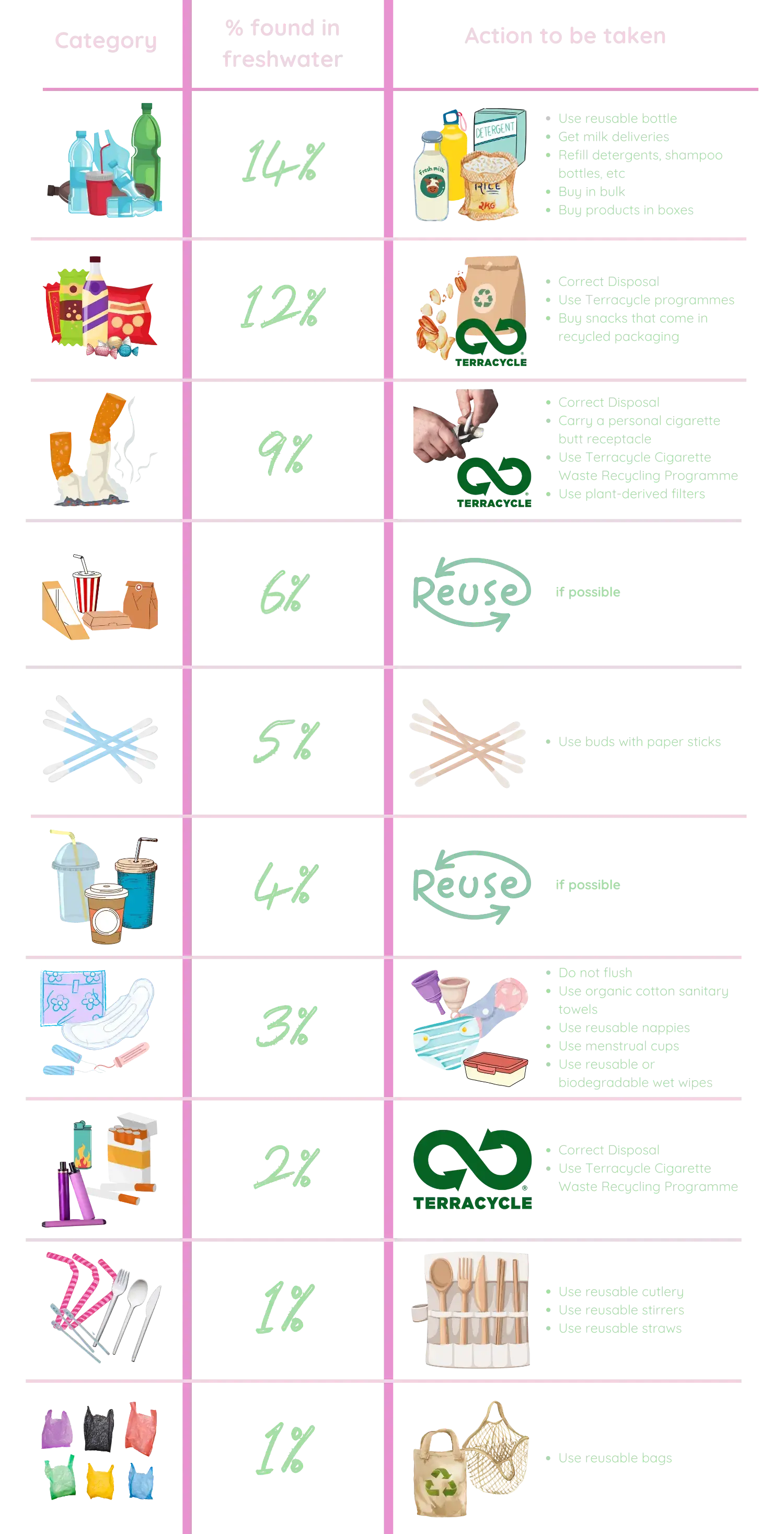Plastic Pollution in Rivers
A recent report by Earth Watch and Plastic Ocean UK highlights water bottles as the primary contributors to plastic pollution in UK waterways.
Statistics on Plastic Bottles
- Consumption:
The average individual in the UK uses around 150 plastic water bottles annually.
- Disposal:
Approximately 5.5 billion plastic bottles face disposal issues yearly, contributing to emissions of 233,000 tonnes of carbon dioxide equivalents.
- Littering:
Alarmingly, 6.9% of plastic bottles end up as litter, worsening environmental concerns.
Addressing the Issue
To tackle this problem, the report recommends:
- Adoption of Reusable Bottles:
Encouraging the use of reusable bottles as an effective solution.
- Life Cycle Analysis:
Emphasizing the importance of conducting comprehensive analyses to identify and promote environmentally beneficial types of bottles.

Measures and Solutions
Regulatory Measures
Governments globally are taking steps:
- Bans on Single-Use Plastics:
Implementing bans to combat pollution.
- Promoting Recycling Initiatives:
Encouraging recycling to reduce plastic waste.
Innovative Solutions
- Biodegradable and Compostable Plastics:
Developing renewable plastics that break down easily.
- Microplastic Capture Technologies:
Focusing on filtering and capturing microplastics.
-
Waste Interception and Collection Devices:
Systems designed to intercept and collect plastic waste before entering rivers or oceans.
-
Advanced Recycling Technologies:
Innovations in recycling technology aim to improve plastic recycling rates by making the process more efficient and cost-effective. This includes chemical recycling methods capable of breaking down plastics into their original components for reuse.
Community Actions and Long-Term Solutions
- Community Initiatives:
Raising awareness and promoting responsible waste disposal.
-
River Clean-up Initiatives:
Organizations and community groups conduct river clean-up drives using specialized equipment like
boats equipped with nets or skimmers to remove plastic waste from water surfaces.
- Circular Economy Models:
Redesigning products and systems to reduce waste, minimize
single-use plastics, and promote a closed-loop recycling system.
Raising awareness and promoting responsible waste disposal.
Organizations and community groups conduct river clean-up drives using specialized equipment like boats equipped with nets or skimmers to remove plastic waste from water surfaces.
Redesigning products and systems to reduce waste, minimize single-use plastics, and promote a closed-loop recycling system.
Individually, we are one drop. Together, we are an ocean. Ryunosuke Satoro